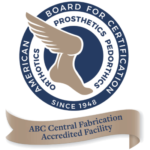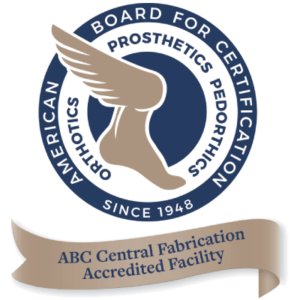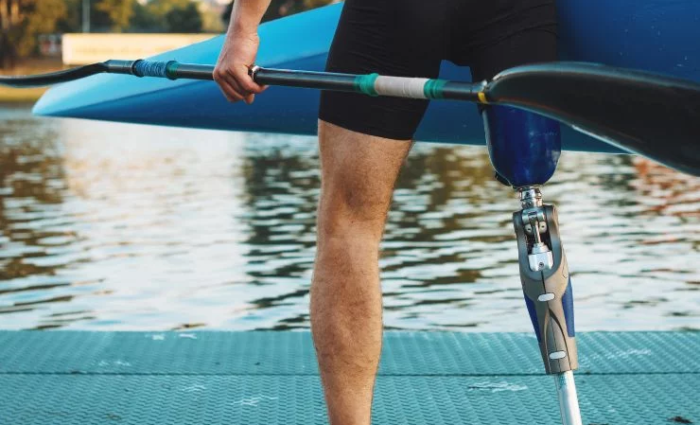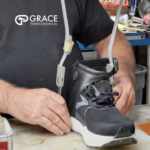Clever Ways to Make Life After Amputation Easier
One of the most difficult roles you have as a doctor is those times you have to tell a patient he or she must undergo extremity amputations. Limb loss affects over 2 million Americans and the way that your patients adjust to their limb amputation will have a lot to do with their attitude and quality of life.
The sooner patients can manage their limb prosthesis, the easier their activities of daily living will be. Here are some suggestions you can make to your patients to improve their physical and mental health through the challenges of everyday life.
Leg Amputation
Leg amputation is the most common form of amputation. Nearly three-quarters of leg amputees are below knee, while the rest of leg amputations are above knee. Patients with a leg amputation must wait for up to 6 months after their amputation to heal and return to good health.
There are some great solutions for amputees with limb prostheses around the house for life after amputation. First, you need to think about a patient’s bathing situation after they return home. If they want to use their shower, you may want to recommend a shower chair, and a suction shower handle.
Also, once the physical rehabilitation is complete and the wound is healed, patients may want to use a hands-free knee crutch, which allows patients to get around in their homes until their artificial limb is complete, or if they want to do work in their homes without their prosthetic.
Patients with leg loss often don’t realize they need more than one form of transportation. Often, in order to get all of their work done in their homes safely, patients need crutches or walkers. For example, many patients use a walker to enter and exit the shower. Patients will feel more comfortable about life after amputation when they can get around their houses and complete tasks.
Your Arm and Life After Amputation
Arm amputations make up nearly 30% of all amputations. Human hand amputations represent about 10% of all arm or upper extremity amputations. Just as with patients who have a prosthetic design for their leg, patients with prosthetic arms need a creative way to live life after amputation.
One of the most difficult areas to tackle for patients with a prosthetic design is working in the kitchen. Range of motion is necessary for the kitchen, but some amputees find it difficult to work in real time.
However, there are many inventions for amputees to use in the kitchen, such as grippers, easy-to-open containers for leftovers, and kitchen carts to use by islands or workstations to hold supplies. There are also liquid containers made for amputees with limb losses to arms that make it easy to pour milk, tea, or other beverages.
Easy Long Term Solutions
Not too long ago, patients had a difficult time adjusting their everyday activities to a new way of life with a prosthesis. The only way patients could get new information was through their physicians. However, thanks to the internet, patients can join groups for help and support. The internet is also full of great gadgets for amputees to use that will make their lives easier.
For example, many amputees buy clear, hard, plastic tubes that fit over a limb amputation to protect it while it heals. Also, there are a variety of shoelaces available for amputees that make tying shoes a cinch. One of the best items that all upper extremity amputees might benefit from are tools with handles. These special tools slide over a patient’s hand so that an amputee can brush their teeth and hair without assistance.
Many patients want to personalize their prostheses so that they represent their hopes, dreams, and sense of style. There are many techniques to personalize a prosthesis. Prosthetic fabrication can be enhanced through spray skins of characters, superheroes, princesses, or sports teams.
Patients can create individual designs during the fabrication and lamination process, which means that no prosthetic design is the same as another. For example, if your patient is a huge Buccaneers fan, their prosthetic could contain a team logo, a favorite player, or even a jersey from the Super Bowl!
If you have a patient who is athletic, the central fabrication process can streamline a prosthesis to make it more aerodynamic. In fact, a lot of amputees find that personalization of the prosthesis after central fab will go a long way towards helping them move forward in recovery. You can always check with your local Department of Health for other ideas for personalizing prostheses.
Work With Grace Prosthetic Fabrication Today
If you are looking for solutions for your patients who have experienced limb loss, Grace Prosthetic Fabrication has been a central fabrication leader for over 30 years. We invented Grace Gauntlets and Grace Plates to make the best prostheses available for our customers.
We have a variety of prosthetic designs available and thousands of ways prosthetics can be personalized for your patients, whether they want to run a marathon or run from their kids. Best of all, if your patient wants a prosthetic arm or leg that is as personal as they are, we can help. Contact Grace Prosthetics today, and let us help you make your patients’ recovery easier.






